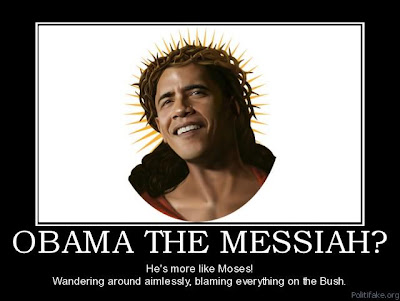The notion of a “meme” is derived from the word, “enthymeme,”
a type of Aristotelian argument that leaves out one of more of the premises, or
comes to an incomplete conclusion. As such, in a meme, one or more parts of the
argument are suppressed, requiring that the reader infer the completed argument
for him or herself. In 2012, memes became a huge part of internet discourse
regarding the election, especially after the presidential debates when Romney’s
“binders full of women” gaffe went viral. Given the interesting role of
religion in the 2012 presidential election (Romney was the first serious Mormon
candidate and Obama was the first Democrat to engage the subject of religion
since Jimmy Carter), attending to memes that feature both the candidate and the
subject of religion can help us to better understand the unique context of the
2012 election. This, by extension, can also help us to see how members of the
public responded the way that each candidate invoked his religious perspective.
To that end, the memes I have chosen to study concern the
intersection of politics, religion, and identity during the 2012 presidential
election. In particular, I looked at memes that were posted between June and
December 2012 that featured one or more of the major presidential candidates
(Barack Obama and Mitt Romney). The memes varied in theme, but those featuring
Obama seem to stem from two major categories: Obama as Jesus and Obama as
Muslim. The memes featuring Obama as Jesus tended to be critical, positing that
either Obama’s fans or Obama himself viewed Obama as Jesus. The memes featuring
Obama as Muslim are also critical, assuming that the reader will “fill in” the
idea that a Muslim president is inherently a bad idea.
The memes featuring
Romney also fell into one of two categories: Romney’s Mormon belief as
illogical, or Romney’s Mormonism in conflict with his (alleged)
classist/racist/sexist beliefs. For the purposes of this discussion, I will
provide an example and analysis of one meme from each candidate. The memes that
characterized Romney as illogical based on his Mormon beliefs tended to poke
fun at specific aspects of the Mormon religion, such as sacred undergarments,
Joseph Smith’s golden plates, and the more extraterrestrial aspects of
Mormonism.
In the first meme, Obama is pictured as Jesus of Nazareth. The
image into which Obama’s face has been photoshopped is strongly reminiscent of “Ecce homo,” a famous Spanish fresco painted by Elias Garcia Martinez. Underneath the
image, the phrase “Obama the messiah?” is posited as a problematic statement or
question. The smaller text underneath says, “He’s more like Moses! Wandering
around aimlessly, blaming everything on the Bush.”
The comparison between Obama and Jesus is not unique, as
several Christian media outlets accused Obama of having a “messiah complex”
during the election cycle. John Stewart of the “Daily Show” even addressed the
issue, albeit from a humorous, sarcastic perspective. The fact that the creator
of the meme chose “Homo ecce” may be even more telling, as the original fresco
was restored unsuccessfully, resulting in a marred image. From this
perspective, it is possible to view the meme creator’s view of the
Obama/Messiah concept as essentially flawed, incapable of being compared to the
original. In addition, the comparison of Obama to Moses invokes the Biblical
account of the Israelites wandering in the desert for forty years. In this
case, though, the American people are thought to be aimlessly wandering under
Obama’s leadership. Finally, the meme states that Obama is “blaming everything
on the Bush,” clearly referencing George W. Bush. This statement is
interesting, because for the reader to accept this statement as critical of
Obama requires that the reader be uncritical of Bush (or to at least deny Bush’s
culpability in the economic collapse). In summary, then, the pairing of Obama’s
face in a messianic image is meant to be ironic, as the central message of the
meme is that Obama is decidedly un-messianic. Further, the meme posits Obama as
the source of the nation’s ills at the time (the meme was posted in June 2012)
and pokes fun at those who would look at Obama as a source of hope.
The next meme features Mitt Romney as he appeared in his
official gubernatorial photo for Massachusetts. Superimposed over the top of
the picture is the question, “People evolved from apes?” followed by, “Don’t be
stupid. Everyone knows we come from spirit orbs created by God who lives on the
planet Kolub.” This meme is interesting for a number of reasons, but primarily
for its irony.
First, as governor of Massachusetts, Romney is perceived to have
some level of credibility, established in part through using his official
gubernatorial photo. However, the meme creator attempts to debunk Romney’s
credibility by pointing out inconsistencies between the Mormon faith and the
popularly accepted theory of evolution. However, in attempting to do so, the
author of the meme essentializes and misrepresents aspects of the Mormon faith
that make the meme as a piece of criticism less credible. For example, “the
planet Kolub” referenced in the meme is not said by Mormons to be the residence
of God, but the star closest to God and is spelled “Kolob” (lds.org, 2012).
While these may not seem like very significant errors, the lack of knowledge
regarding the Mormon religion that is conveyed significantly decreases the
impact of the meme (at least to those who have a moderate level of religious
literacy). In effect, then, while the Romney meme attempts to make Romney seem
less credible or logical because of his faith, further investigation reveals
that the more telling lack of knowledge is that of the meme’s creator.
References
Jenkins, H. (2006). Convergence culture: Where old and new media collide. New York, NY: New York University Press.
Church of Jesus Christ of Latter Day Saints. (2012, February 21). Kolob. Retrieved from http://www.lds.org/scriptures/gs/kolob?lang=eng


No comments:
Post a Comment